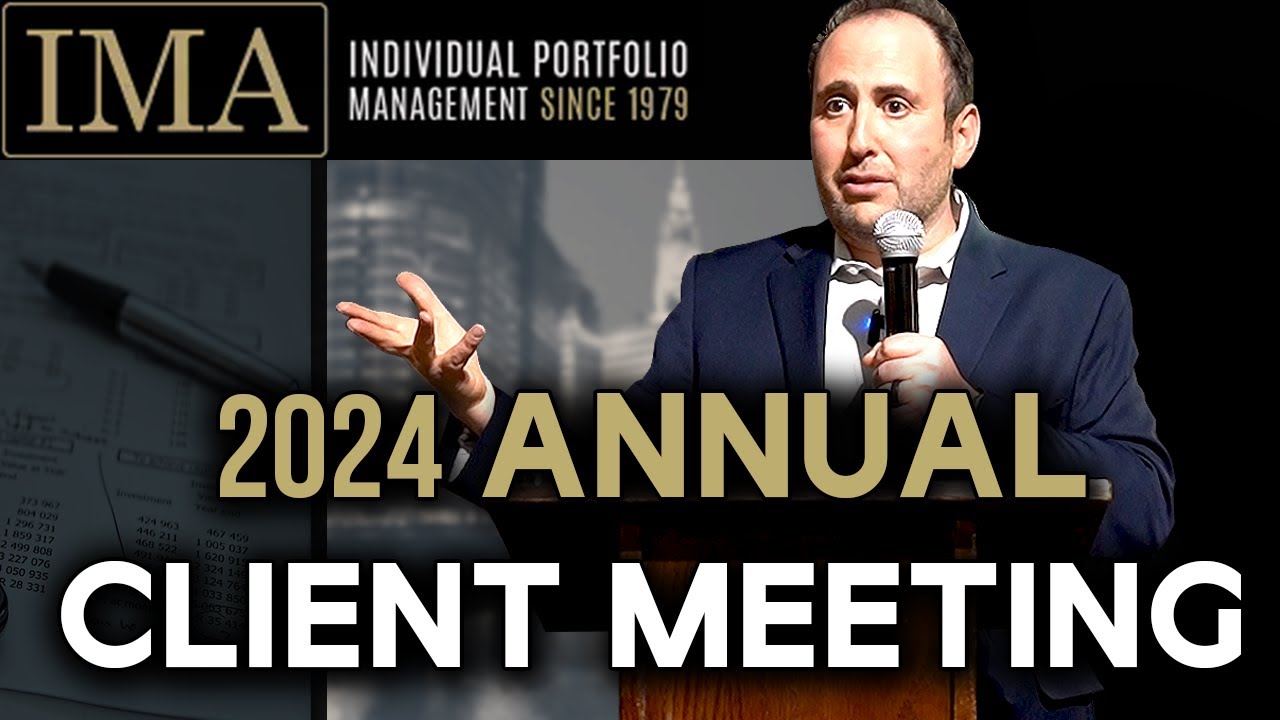Recently my firm was hiring a junior analyst – someone who’d work directly with me. In the past we’d post an advertisement and get hundreds of resumes and we’d have to dig through them trying to identify a candidate with the right pedigree and relevant experience.
We have probably employed thirty interns over the years to help us with research. We have learned from experience that educational background, prior experience, and even working toward the CFA designation had very little predictive power as to whether a person would end up doing great or just mediocre research. I decided to take a slightly different approach to hiring for this position. There was only one factor that really mattered to me this time – passion.
Yes, passion!
Investing, though it can be an incredibly intellectually stimulating and rewarding endeavor, can also be (and often is) very frustrating. Thoroughly researched and well-thought-out decisions don’t always result in the expected outcomes (you can thank Mother Randomness for that). But even when decisions do pan out, the time for gestation to fruition may be years.
Passion is the fuel that keeps a diehard, process-driven value investor going through the times when the markets are divorced from reality, when it feels like you are living Einstein’s definition of insanity – doing the same thing over and over again and expecting a different outcome.
There is a saying in basketball: You cannot teach height. In investing, you cannot teach passion.
How do you find out if applicants actually have passion?
Build barriers for candidates to climb. I intentionally made applying for the job a very time-consuming exercise. We asked for the following from the candidates: List the books you’ve read over last twelve months (not limited to just investment books); give us a sample of a stock idea analysis; write a few paragraphs about two people (dead or alive) who impacted you the most and tell us why; tell us about three books that have impacted you the most and why; and finally, write us a cover letter to tell us why we’d be making the biggest mistake of our professional lives by not hiring you.
We contacted local universities and posted this position on social networks. Someone on Facebook opined that he would not want to apply for a job that required so much effort. My reply was, I only need one person (and it was not him).
We received four dozen applications. Most of them were just resumes with a standard cover letter that predictably said something along the lines of “Dear hiring manager, I am awesome. Hire me” – we completely ignored them.
However, we received a dozen submissions that answered every question posed by the job description. We carefully studied these submissions, conducted several interviews, and hired a person who went far and beyond what we asked for in our questionnaire.
After this process was completed, I felt that I owed the candidates who had done their homework the courtesy of at least paying them back with my time. I contacted them and offered to meet them in person or over the phone.
Here is why…
I know exactly how most college graduates feel. I remember that when I graduated from the University of Colorado in 1997, felt completely lost. I had no idea what to do next. As I was thinking what advice I’d give our candidates, I realized I just had to think what advice I’d give myself twenty younger. I did what I usually do when I think – I sat down to write.
So here it comes.
A Letter to a Young Investor (or my younger self)
To quote Mark Twain, don’t let schooling interfere with your learning. I recall that when I graduated from university, I was feeling invigorated by Modern Portfolio Theory (MPT). I was ready to calculate betas and go on the expedition to look for the efficient frontier … only to discover that MPT, though it won Harry Markowitz the Nobel Prize, was not used by practitioners. It is used by academics and consultants (the latter being academics who could not quite make it in the real world).
MPT is a model, and just like many economic models, it comes with a warning label in small print: Ceteris paribus, which translates from Latin as “other things being equal.” Be very wary when you see this phrase; it is asking you to ignore what did not fit into the elegant formula, which in this case is the assumption that humans are rational. Creating a theory based on this assumption is as useful as building a plane by using physics that assumes the world is flat or puts gravity in ceteris paribus small print.
I have had thousands of conversations with other professional investors, and I have yet to have a deep and meaningful conversation or debate about beta or the efficient frontier.
Find yourself. Investment strategy is like a piece of tight clothing: Just because it fits and looks good on someone else, doesn’t mean it’s a good fit for you. Your investment strategy has to fit your personality; it has to wrap around your biases and life experiences. You’ll only discover your strategy, the one that fits your personality when rubber hits the road, when you start putting real money to work.
Which brings me to the next point.
Just do it. The best way to learn investing is by doing it. Don’t do paper portfolios. Take as much money as you are can afford to lose (because you may lose it), and invest it –. Look at this sum as real-world tuition and start investing one stock at a time. The most difficult part of investing is staying rational when you get punched in the face by the markets. Paper portfolio doesn’t punch you in the face; the worst they’ll give you is paper cuts. Understanding the emotions that losses and gains evoke in you and dealing with these emotions is incredibly valuable.
Don’t focus on building a properly diversified portfolio. Your initial focus should be stock analysis, not portfolio construction. You simply won’t have the time to do enough deep research to build a diversified portfolio of 15 to 25 stocks. At this point in your career, depth is more important than breadth.
Invest, don’t gamble. Do the analysis with the diligence and care that you would bring to investing your parents’ retirement savings.
Document your research. Imagine you are working as an analyst at a mutual fund and writing a pitch for a stock to a portfolio manager. And then after he has listened to your advice, you are updating him on what to do next. I promise you this: You’ll learn a lot from documenting and writing up your research. This will keep you rational. And there is another important benefit: When you apply for an analyst job, you’ll have something to share that sets you apart from everyone else (many with better educational pedigrees) applying for the job.
I’d recommend browsing through investment writeups on ValueInvestorsClub.com. This website was started by Joel Greenblatt – a terrific investor who wrote The Little Book That Beats the Market and You Can Be a Stock Market Genius. (By the way, I highly recommend both books.) It has 250 members (I am a member). It is very difficult to become a member, but you can browse every idea that has ever been posted there with a 90-day delay. This is where you can learn what the depth and rigor of your research needs to be. Writeups there are posted by diehard value investors, not academics, who put their money where their mouths are.
How do you start? What stocks do you begin analyzing first? Recently I was asked this question by a fellow who had undergraduate and graduate degrees in aerospace engineering. What do you think my answer was? I said “You probably know more than most people your age about the aerospace industry. Create a map of the industry and then learn about each company in the industry.”
If you got yourself through college working at a restaurant, and if you are not sick of it, restaurants and food distributors would be a great place to start. It is easier to start analyzing something you already understand. By doing so you are removing an extra layer of complexity involved in learning the physics of an industry.
Embrace ambiguity. When you solve physics problems you expect the answers to extend several digits beyond the decimal point. Physics is an exact science. In investment classes you were given precise inputs to punch into mathematical models and thus were expected to spit out exact answers. But unlike the inputs you were given in your classroom problems, real-world inputs are imprecise; indeed, they can be downright hairy. Thus heed John Maynard Keynes’ advice: “I’d rather be vaguely right than precisely wrong.” Vague rightness comes from understanding how things work and the relationships among variables.
Learn to say I don’t know. You cannot be expert in everything. Someone who has an answer for everything probably knows very little. Saying I don’t know when you don’t know requires honesty and self-confidence, and it opens doors for learning.
Make investment friends. My life over the last twenty years has been enriched by having great investment friends around me. Today my investment friends are really just my friends, with whom I share and debate stocks, though we also talk about what your normal topics – family, kids, etc. Investing doesn’t have to be a solitary, sterile journey; in fact it should not be one. Every investor, without exception, will go through a period where he or she feels like a complete idiot – the market will do this to you at times (trust me on this one). If you have surrounded yourself with the right (humble, non-arrogant, empathetic, pull-you-up and never-push-you-down) investment friends, they’ll provide the support that will help you cope with this difficult time. Also, if you surrounded yourself with friends who are smarter than you, then you’ll have an endless opportunity to learn from them.
Here are some books that I’ve found helpful.
I’d start with Fooled by Randomness, by Nassim Taleb, which will make you deeply appreciate the role randomness plays in investing.
There are a lot of books written by about Buffett, but my favorite is still The Essays of Warren Buffett, Buffett’s annual reports edited into a book by Lawrence Cunningham. Then there’sPoor Charlie’s Almanac, if you want to understand the second half of Berkshire Hathaway – Warren Buffett’s partner, Charlie Munger – which also includes Munger’s speeches.
Thomas Sowell’s Basic Economics has taught me more about economics than all my economics classes combined.
Margin of Safety, by Seth Klarman – one of the most brilliant investors of our time. Though the book is out of print, you can find it online if you’re resourceful. If you fail to find Margin of Safety, Howard Marks’ The Most Important Thing Illuminated is also filled with Klarman-like wisdom.
I was a big fan of the Little Book series long before I wrote a book for that series. However, the process of writing one made me appreciate the series even more. These books are usually written by great thinkers and practitioners (we’ll exclude yours truly), who often have taken their “big” books (as I did) and simplified and condensed them into smaller, more accessible works. This process of simplification and condensation forces you to keep what matters the most. My two favorite books in is series are The Little Book of Behavioral Investing, by James Montier, and The Little Book That Builds Wealth, by Pat Dorsey.
Reminiscences of a Stock Operator, written in 1923 by Edwin Lefevre, tells from a first-person perspective the fictionalized tale of the early years of the great trader Jesse Livermore. It is rumored that this book was actually written by Jesse Livermore and edited by Lefevre.
Though traders and value investors fish in the same pond – the stock market – and may even catch the same fish at times, their approaches and analytical timeframes are diametrically different. However, they do share a common element: Both activities are carried out by humans and thus are impacted by emotions. Reminiscences provides a great introspective look inside a trader’s mind and teaches many behavioral and common-sense lessons. My favorite edition is the one annotated by my friend Jon Markman. Jon’s annotations are like a book within a book; they take you behind the scenes of Lefevre’s story and give important insights into the key characters and the backdrop of that very interesting time period.
This is anything but a complete list, but it’s a good start for learning about investing.
I don’t want to end with empty platitudes, but I’d be remiss if I didn’t stress the importance of having an unstoppable, insatiable thirst for knowledge. Learning doesn’t cease when you graduate from university; it continues and never stops. As I look at my investment role models, all them, without exception, have that quality. If you don’t have that thirst, cut your losses and find another career or hobby.
A value investor needs to have a growth mindset.










Helps
Thank you for sharing. This piece gave me some comfort that I’m working towards the right direction and also provided a sense of direction for future learning. Really appreciate it.
I could not have said it better as I shared your feeling and experiences. I also did create a process to ensure all applicants (be it interns or prospective employees) to go through, testing their determination and prove their passion to get this opportunity as we shall spend lots of time/efforts in training them into the job/career.
I always enjoy what you write. Investing in stocks was something I wanted to do but did not take the time. In the last year I have invested approximately $5,000 in different stocks that I researched…. Some are good…. Two were bad…. But I believe the best thing to do is to decide and just leave it alone. It seems to do better when not watched so closely. The other thing I really enjoy is the pictures your family makes and the music you introduce me to. Thanks for your passion.
Best Thoughts,
Robin
Very Good